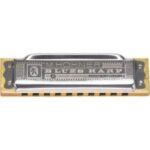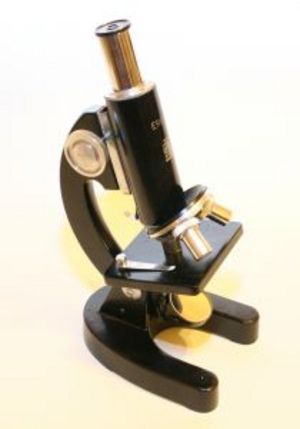I’ve been playing harmonica for nearly 20 years, and you’d think that I’d be happy with my equipment. Something’s wired wrong in a musician’s mind that makes them constantly and perpetually look for better tone than they currently have. Instead of looking within, which is where all tone comes from, we hope to find that magic configuration or combination that will satisfy this urge for perfect tone.
It’s this mythical search that keeps me trying out new harmonicas, even though I am thoroughly devoted to Hohner’s Marine Band Harmonica (Model 1896). It’s basically the same harmonica that the greats from the 40’s, 50’s and 60’s used, so it’s good enough for me.
When I learned that Hohner used to own Hering Harmonicas in Brazil, and that a group of investors had bought Hering from Hohner with the intention of restoring the brand to it’s heyday 60’s glory, I had to give them a try. A quick search showed me that the model most closely related to my Hohner Marine Band was the Hering 1923 Vintage Harp. The picture even resembled the Hohner competitor. While my devotion to Hohner is due to tone, the build quality has suffered and varied over the years. Most people don’t realize that a harmonica player can only use a harmonica for around a month when playing every day until the harmonica suffers from metal fatigue causing the reeds to go out of key, or fail altogether. We replace them like guitar players replace strings, so we have ample opportunity to try out a new instrument. Other musicians don’t have that luxury. The essence of my search has been to find a harmonica that delivers good tone, but has superior build quality over the Marine Band 1896. Hohner even knows this build quality is poor, which is why the Marine Band 2005 is offered, but costs more than twice as much as a standard Marine Band. This was my quest.
Upon opening the case of the Hering 1923 Vintage Harp, I immediately was put off by the “cheese” factor. Hering has either painted the metal, or put it through some process that make the Harmonica appear to be an antique. As I’m looking for that elusive tone, I really don’t care what the instrument looks like. I care about how it plays, sounds and is built. Upon closer inspection, I could see screws instead of nails, a good sign. The key to good sound quality in a harmonica is what I call “tightness”. The harmonica has to be airtight, forcing all of the air through the reeds. Over that past 10 years, Hohner has started to attempt to keep the price of the Marine Band’s down by replacing critical features with lesser quality ones. Having the case screwed down, and the reed plates screwed to the wood comb makes the harmonica more air tight. Several years ago, Hohner stopped using screws and went to a small nail to hold the case to the comb and the reed plates the comb. Seeing the screws in the Hering causes me to rate the build quality of the Hering 1923 Vintage Harp on par with the $55 dollar Marine Band 2005. But build quality isn’t the main deciding factor, I’m after that “killer” tone!
My test for tone is just to simply play the harmonica through a few of my normal sounds. Including throat vibratos, tongue-blocking and note bending. What I’m looking for is a tone that’s not harsh or shrill, but warm and smooth. I’m also looking for how quickly and reliably the harmonica responds to different pressure, note changes and chords. This is where the Hering shines. I have never been as happy with a non-Hohner harmonica. In my 20 years of playing, I am happy enough with the tone of the Hering that I would actually use it in a gig.
While I believe the Hering has a little “brighter”, or more metallic, sound than a Hohner Marine Band, it has several qualities that I like better. Again, the build quality is superior, but beyond that, the wood comb of the Hering is coated in a varnish or lacquer, making the wood very smooth. This is important when playing faster songs that require quicker note changing. Also, the edges of the holes are flattened at a 45-degree angle, removing the sharp corners that usually are present on wood-combed harmonicas. This is the same process that is used in the more expensive Marine Band 2005, so I immediately grab my Marine Band 2005 and compare the tone of the Hering to it. The Marine Band 2005 sounds smoother, more warm, but I am still impressed with the Hering.
All in all, I am happy with the Hering 1923 Vintage Harp, and it is a viable alternative to a traditional Hohner Marine Band 1896. It is similar in tone, easier to play, and gives nearly identical tonal qualities as the traditional Marine Band. If money were no object, I’d still have to go with the Marine Band 2005, which in my opinion, is the best wood-combed harmonica made today. But for $20 each, my next set of harmonicas will be the Hering 1923 Vintage Harmonicas as I expect them to hold up better than the comparatively priced Marine Band 1896.



